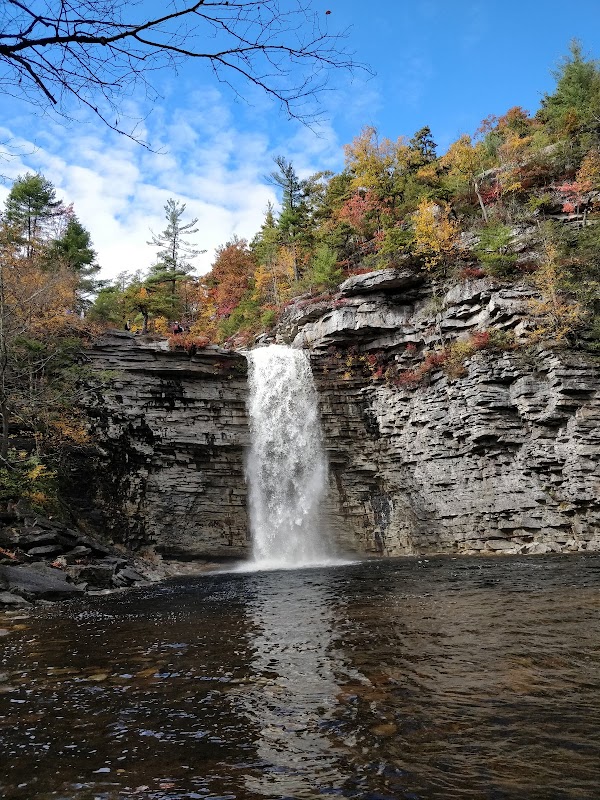
Shells and Celebration: Your Guide to the Norwalk Oyster Festival
The Norwalk Oyster Festival in Connecticut offers a lively blend of fresh seafood, local culture, and waterfront adventure. Discover practical tips and insider knowledge to prepare for this immersive celebration of oysters and artistry in mid-October.
Wear Comfortable, Non-Slip Footwear
Festival grounds include docks and uneven surfaces near water; stable shoes prevent slips and keep you comfortable all day.
Stay Hydrated Throughout the Day
Balancing the saltiness of oysters requires ample water or light beverages, especially if sampling alcoholic drinks.
Bring a Lightweight Waterproof Layer
The festival runs rain or shine; weather can shift quickly near the water, so a packable rain jacket is smart.
Plan for Weekends in Mid-October
The festival peaks during this time when fall colors add vibrancy and cooler temperatures sharpen the experience.
Shells and Celebration: Your Guide to the Norwalk Oyster Festival
Each October, Norwalk, Connecticut, comes alive with the clatter of shucking knives and the savory scent of fresh seafood at the Norwalk Oyster Festival. Set along the waterfront, this vibrant event invites adventurers of all appetites to experience the region’s most celebrated freshwater delicacy. Beyond just oysters, the festival blends local culture, live music, and family-friendly activities into a weekend that stirs both palate and spirit.
The festival's location by the Norwalk River sets the stage. Here, water asserts itself—not quietly—challenging attendees to appreciate its dynamic pulse as boats ripple the surface and gulls announce the bounty of the sea. The staging area is a compact expanse, easily navigated on foot, with dozens of oyster shuckers competing for your attention. Sampling options abound: from raw oysters literally fresh from nearby beds to smoked and grilled variations layered with inventive toppings.
For those planning to dive into the oyster experience, practical tips ensure no gustatory detail is missed. Wear comfortable shoes; mud and uneven docks add texture beneath your feet. Hydrate steadily—oysters, salty and rich, meet their match with crisp water or a local ale. The festival runs rain or shine, so a light waterproof layer is wise.
Adventure at the Norwalk Oyster Festival extends beyond food. Live music groups rotate throughout the day, each set pulling you closer to regional musicians who fiercely own their craft. Vendors selling artisan goods and local art invite exploration, and interactive shellfish education tents provide a quick but thorough dive into oyster ecology and harvesting techniques.
Families find a warm welcome here with dedicated kid zones offering simple crafts and nature walks along the riverbank, where the current dares you to follow its swift path. You might spot a bald eagle circling overhead or a great blue heron fishing—silent guardians of this rich habitat.
If timing your visit, aim for mid-October. Fall colors shift along the coastline, offering contrast to the glittering water and lively festival atmosphere. The air holds a crisp edge, invigorating yet not biting, enhancing both appetite and energy.
Navigating the Norwalk Oyster Festival means embracing an event fiercely itself. It insists on engagement, asking visitors not just to eat and watch but to listen to the voices of shellfish farmers, storytellers, and musicians. This is more than a festival. It’s a moment of connection with place—a practical celebration of nature’s abundance and human skill. Prepare well, pace yourself, and you’ll leave with more than a full belly: you’ll carry a deeper understanding of Norwalk’s waterfront vitality.
Nearby Trips
All Adventures
Boat Charters
Water Activities
Adventures near Norwalk, Connecticut
Discover the unique and memorable adventures that make Norwalk, Connecticut special.
Frequently Asked Questions
Are oysters at the festival sustainably harvested?
Yes, many vendors partner with local farms employing sustainable aquaculture practices, supporting water quality and regional ecosystems. Educational booths highlight these efforts.
Is the festival family-friendly?
Absolutely. Dedicated children's zones offer activities like shell crafts and guided nature walks along the nearby riverbank, enabling all ages to enjoy.
What wildlife might I see during the festival?
Keep an eye out for bald eagles, great blue herons, and various migratory waterfowl; they frequent the Norwalk River, adding natural spectacle to the human celebration.
Can I purchase oysters to take home?
Yes, several vendors sell fresh oysters and prepared seafood products, but local regulations require refrigeration, so plan your transport accordingly.
Are there vegetarian or non-seafood options available?
The festival features multiple food vendors with varied menus, including vegetarian dishes and seasonal local produce, ensuring diverse tastes are accommodated.
What is the best time of day to visit the festival?
Late mornings into early afternoons provide lively atmosphere with shorter lines and active demonstrations, while evenings offer music and calm waterfront views.
Recommended Gear
Comfortable Walking Shoes
You’ll be on your feet amidst docks and festival grounds—shoes with grip and comfort help you stay steady.
Reusable Water Bottle
Keep hydrated throughout the oyster tastings and walking segments with fresh water at hand.
Light Rain Jacket
Weather near the water can be unpredictable; packable protection guards against sudden showers.
Small Daypack
Carry essentials including snacks, a camera, and any purchases comfortably during your festival visit.
Local Insights
Hidden Gems
- "Oyster House Pier for up-close views of shucking competitions"
- "Nearby Sheffield Island Lighthouse accessible by boat tour"
- "Small local art installations tucked near festival pathways"
Wildlife
- "Bald eagles soaring overhead"
- "Great blue herons wading the shallow edges"
- "Migratory ducks and songbirds along the riverbanks"
History
"Oyster harvesting in Norwalk dates back to colonial times, essential for local economy and culture. The festival honors this legacy through storytelling and sustainable aquaculture education."